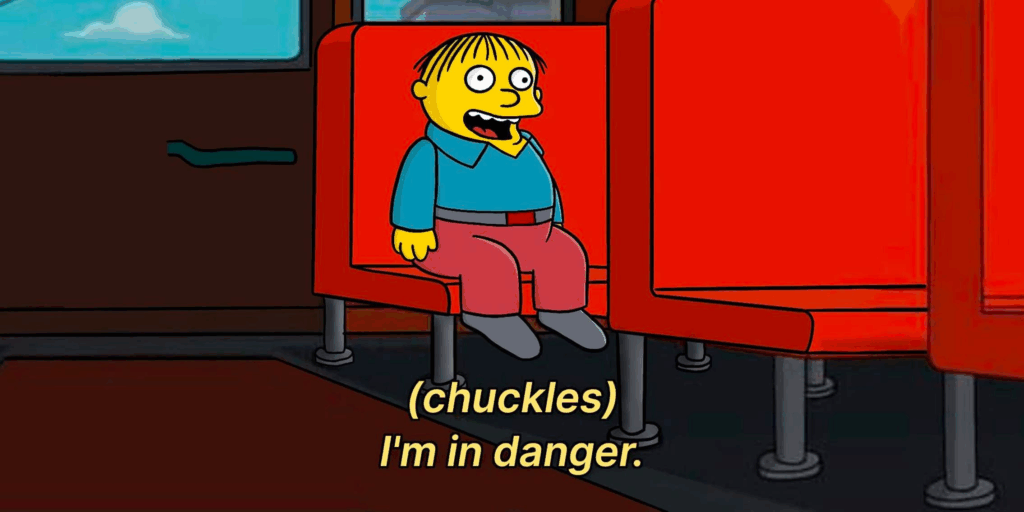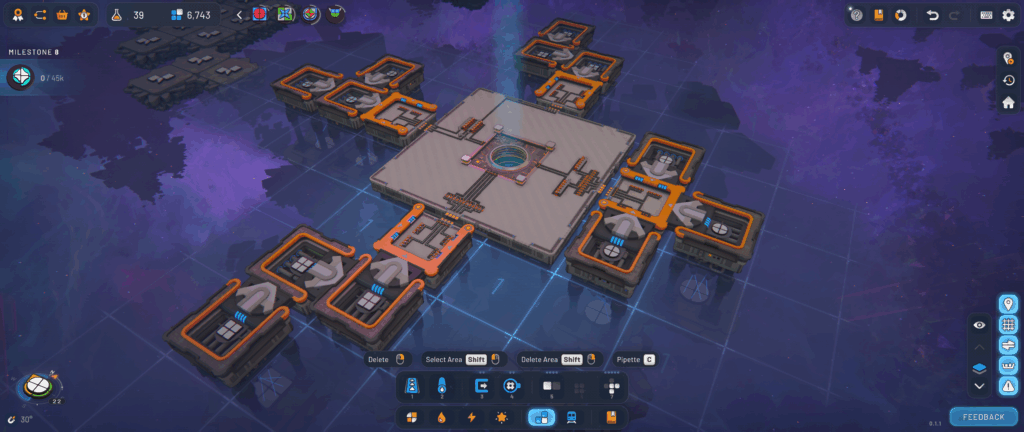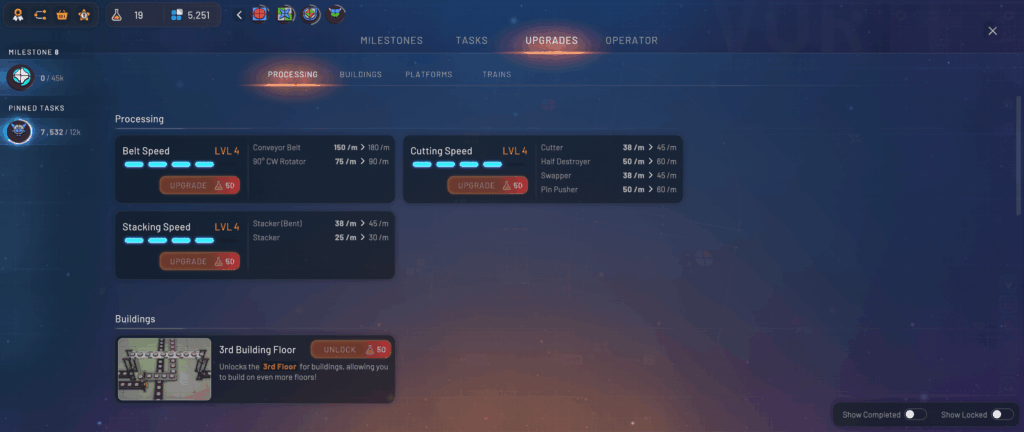I know… when is the printer going to be fixed. Listen I’m really close, I swear the next post will be print related, I know you are all dying to see 3D printing content again 🙂 In the meantime, lets talk factory games and wasting countless hours trying to be a perfectionist. Now that I have my dope ass music library to play with, lets fire up the Lo-Fi gaming mix and dive right in. The game we’re going to be focusing on? Shapes 2.

I like factory games, I’m not good at them but they do give me some level of pleasure when I play, and that’s the point right? Games like Factorio, Satisfactory and Dyson Sphere all start the same way.
- Step 1: Crash on a planet.
- Step 2: Automate building things
- Step 3: Expand and fight off the locals
- Step 4: Automate fighting off the locals
- Step 5: Repeat Steps 2 thru 4
- Step 6: ????
- Step 7: Profit
Just make sure you out pace the locals, or get overruned!

Shapes 2, slaps a little different. No crash land start, no enemies to worry about, and no finite resources. Just you, a god-like entity, feeding shapes to an eternally unsatisfied black hole. That’s it, that’s the game! Whatever the Vortex demands, you provide. No terrain, no boundaries, just time and your creativity.

Your First Hour: Itty Bitty Building Space

You start off with just the vortex platform and a few shape nodes to extract from. The game runs your through the typical 101 course how do I shape. Put down an extractor, move the shape to the Vortex. DING YOU GOT RESEARCH POINTS!

Feel that? That sweet cozy hit of dopamine. Oooooh but that’s not going to cut it, I need another hit. Next order, cut the shape in half, feed it to the vortex. DING! Next, stack them, feed it. DING! Next, rotate, cut, then stack, FEED IT! DING!

Now you have enough research points to buy some upgrades. Faster belts, faster cutters, faster stackers, faster whatever! But you’re only getting started! The first hit is free, but now there is diminishing returns, upgrades are getting expensive and you need to feed the black hole efficiently.

Luckily for you, that is the other massive upside to this game, SIMPLE RATIOS!! I cannot stress enough how nice it is to have very cut and dry ratios where you don’t need to use a spreadsheet to figure out how many machines you need. Optimizing setups in this game is super easy, especially when you also have no inventory, you can tear down and rebuild as much as you want as fast as you want.
The Expanse: Into New Frontiers!
This is where the game really shines, platforms! Now I do a little programming and one major component in programming is functions. Functions keep your code modular and organized with basic inputs and outputs. Parameters go in, function does thing, results get spit back out. Platforms are the functions of shapes. Instead of me building individual stackers, cutters, and rotators, I can now build them on one platform, then copy it.

For example, one platform can take an entire extractor output, on that platform I cut the entire input. Then I can send it to the next platform, to rotate it, then the next to stack it. I can then copy the entire platform setup and duplicate it to use more extractors!

Then to really take it to the next level, you can stash your pre-fab platforms into blueprints to use them whenever. Hell if you are really lazy and don’t feel like designing things, you can just get blueprints online and add them to your game.
Hehe Train go CHOO CHOO
This is about mid-game, you are mainly using highways to connect your platforms and feed the portal, expanding but still staying relatively close to home. In the grand scale, highways are slow… but you know what’s faster? TRAINS!

Now you can setup things like outposts, stretching your horizons to find that perfect mining plot. Shapes is procedurally generated but with a rarity algorithm. Meaning the really cool shit is way out there! Lets say your next objective is to make a green circle and stack it on a red square. With trains you have options.
- Find a Square and Circle plot near a red and green paint plot, paint the parts and ship them to the vortex
- Use trains to find a red square and green circle plot, train them together to an outpost to stack them, then ship them in.
Option 2 shaves off the painting setup and processing, trading off for more time spent on logistics and travel. Option 1 is more complex to get going, but the plots you need for it are basically everywhere.
The Late Game: It gets Wild
Remember when I said that I’m not good at factory games. Welp, doesn’t matter how chill it is, over time I lose interest. I think for me, it was putting down the same old things over and over again. Not a whole lot of creativity in my setups, mostly because I was just trying to slam through the game in the short amount of time I have to play. Kids man….

Anyway, between paint mixing, pin pushing and crystalizing, I was on the home stretch to the final milestone. But then something switched in my brain. This started feeling like work, an obligation, I stopped having fun. That’s the wall I hit with factory games, the initial dopamine rush of everything is new and easy. Hit that mid tier where you know what you are doing and are expanding and mastering. By the time you hit the late game, it begins to feel like a chore.

Until recently, I’ve had a change in mindset. I would unhealthily obsess about hitting the right ratios, max out builds, go above and beyond what was required for the milestone. Instead of just playing I was working. In some deep soul searching I learned something about myself. I can’t obsess about min maxing, its ok to play it slow, screw up, work on the puzzle of a new machine type. In the famous words of a youtuber I watch Chris Boden: “Its my soap, my dick, and I’ll wash it as fast as I want to!”

So, if you are going to play the chillest factory game out there, then be chill about it. There is no rush, there is no enemies trying to kill you, just have fun with it!
